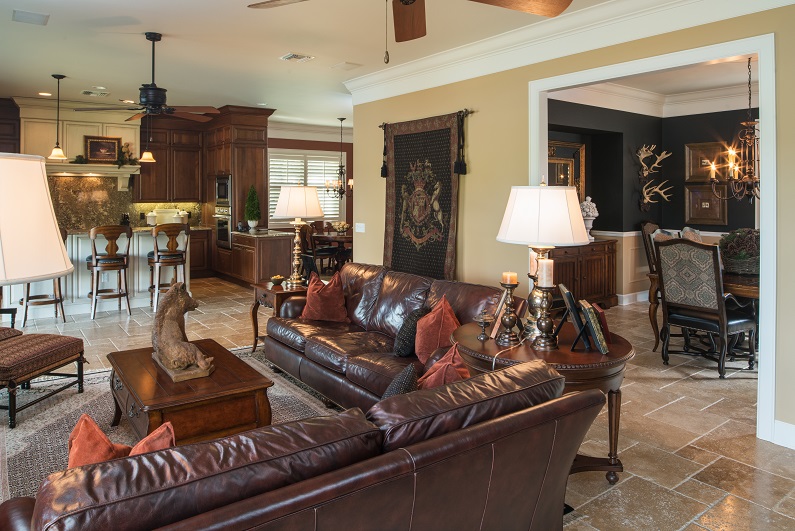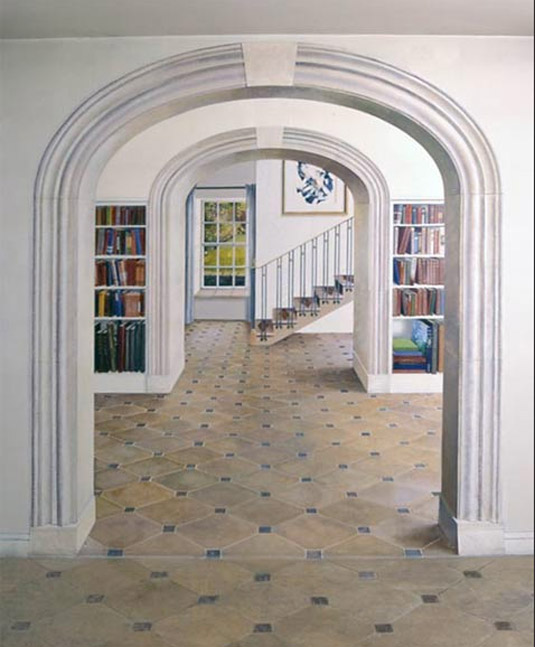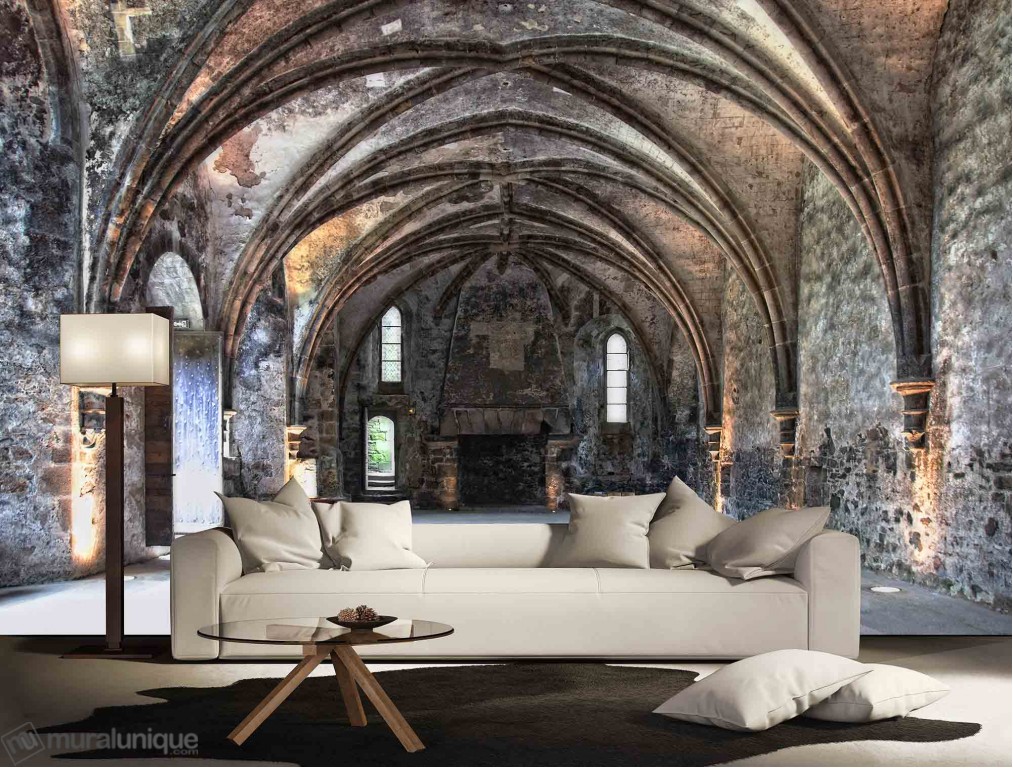With flooring material choices, the consistency, continuity, and overall sameness of the selections allows the eye to travel unimpeded and gives the impression of spaciousness – it is a passive approach. Less visual restriction lends itself to more space perception. Expanding space with wall treatments is more aggressive; it relies on manipulating depth perception. While flooring decisions “allow” the eye to proceed, wall treatments “pull” the eye forward.
WALLS:
Off-set wall colors draw attention forward. My personal preference is “2 & 2”: two tangent walls (walls of importance, i.e. a Bedroom headboard wall and adjacent wall, a Living Room sofa wall and adjacent wall) painted an accent color with the other two walls neutral. In the example of the Bedroom – if a Bathroom is located opposite the adjacent accented wall it affords the opportunity to paint the entire Bathroom the accent color, again, pulling your attention past the neutral wall of the Bedroom to the Bath beyond. It is important to note that the “2 & 2” offset should not be employed in every room for fear of redundancy and negating the idea of drawing attention forward – once you are in the room and looking back the way you came, everything appears neutral and dull.
 Establishing a fixed color palette for use in the body of your home (Living Room, Dining Room, Kitchen, and Family Room) offers the flexibility of alternating colors within the palette from one room to another. Unifying the contiguous spaces with a common palette additionally registers subliminally that the smaller individual rooms are, instead, one large room. Envision a traditional style home utilizing tapestry upholstery, jacquard, woven plaids, patterned chenille, and leather in black, camel, sage, brick, and biscuit. The Foyer is painted camel, the neutral chosen for the palette. The walls of the Living Room to the left are painted black. The walls of the Dining Room to the right are divided horizontally with wainscot and painted black above the chair rail and camel below. The Family Room, Kitchen, and Breakfast Nook are offset painted camel and brick (a variation of the “2 & 2” treatment). Each room is treated individually, but in tandem creates a cohesive whole. One color creates a backdrop for another and pulls the viewers gaze continually forward. Please reference this website’s “Gallery: French Country” home for the actual application.
Establishing a fixed color palette for use in the body of your home (Living Room, Dining Room, Kitchen, and Family Room) offers the flexibility of alternating colors within the palette from one room to another. Unifying the contiguous spaces with a common palette additionally registers subliminally that the smaller individual rooms are, instead, one large room. Envision a traditional style home utilizing tapestry upholstery, jacquard, woven plaids, patterned chenille, and leather in black, camel, sage, brick, and biscuit. The Foyer is painted camel, the neutral chosen for the palette. The walls of the Living Room to the left are painted black. The walls of the Dining Room to the right are divided horizontally with wainscot and painted black above the chair rail and camel below. The Family Room, Kitchen, and Breakfast Nook are offset painted camel and brick (a variation of the “2 & 2” treatment). Each room is treated individually, but in tandem creates a cohesive whole. One color creates a backdrop for another and pulls the viewers gaze continually forward. Please reference this website’s “Gallery: French Country” home for the actual application.
 Trompe L’oeil, French for “deceives the eye,” is a method of painting objects and surrounds in extremely fine detail that lends a three dimensional quality to a one dimensional surface. The treatment may be applied to any paintable surface, but, for the purpose of space manipulation, walls and ceilings are best suited. An artist commissioned for such a rendering will be an extremely expensive proposition; less costly versions are available in murals and wallpaper panels. Strategically placing furniture and accessories around the Trompe L’oeil treated wall incorporates what is real into what is perceived, making the transition seamless and lending further credibility to the ruse.
Trompe L’oeil, French for “deceives the eye,” is a method of painting objects and surrounds in extremely fine detail that lends a three dimensional quality to a one dimensional surface. The treatment may be applied to any paintable surface, but, for the purpose of space manipulation, walls and ceilings are best suited. An artist commissioned for such a rendering will be an extremely expensive proposition; less costly versions are available in murals and wallpaper panels. Strategically placing furniture and accessories around the Trompe L’oeil treated wall incorporates what is real into what is perceived, making the transition seamless and lending further credibility to the ruse.
Wall-to-wall, floor-to-ceiling mirrors applied properly double both space perception and available light. Unless the mirror itself is intended as the focal point, I recommend butt joining the glass seams with no overlay, removing base boards and crown molding, and using chrome “J” molding along the floor and ceiling. The mirrored wall then visually disappears and the two adjacent walls, moldings, and ceiling appear to continue in the glass on the same trajectory.
Another mirror treatment opens space, doubles light availability, and doesn’t require the removal of wall moldings – a mirror on mirror installation. An example would be a recessed Foyer wall with mirror installed corner-to-corner both horizontally and vertically with a cutout to accommodate hangers for a framed mirror to be mounted on the glass. It is a relatively inexpensive treatment with a significant impact.
The largest impediment in manipulating spatial confines is often the simplest to correct – the limits of your own imagination.

